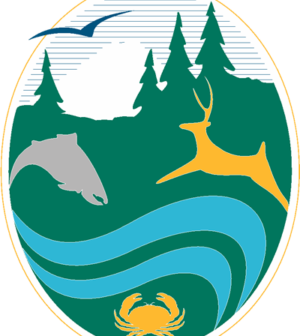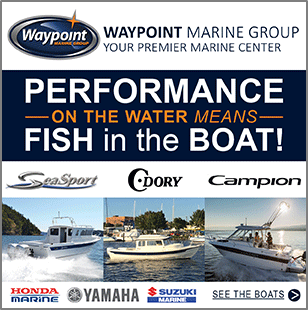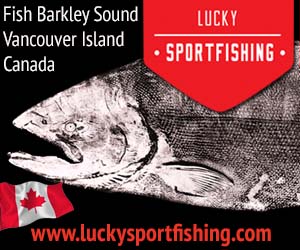WDFW: seeking public input on 2024 proposals for Washington’s ocean salmon fisheries

Washington Department of Fish and Wildlife
March 11, 2024
Contact: Fish Program, 360-902-2700
Media contact: Mark Yuasa, 360-902-2262
FRESNO – Fishery managers have developed options for Washington’s ocean salmon fisheries that reflect lower numbers of several coho salmon stocks predicted to return this year.
The Pacific Fishery Management Council (PFMC), which brings tribal, federal, and state entities together to establish fishing seasons in ocean waters three to 200 nautical miles off the Pacific coast, approved three options for ocean salmon fisheries for public review. These ocean options will help inform other Washington salmon fisheries as the season-setting process continues.
“The options for ocean salmon fisheries this year reflect forecasts for Columbia River Chinook that are similar to last year,” said Kyle Adicks, Intergovernmental Salmon Manager for the Washington Department of Fish and Wildlife (WDFW). “The number of hatchery coho expected to return to the Columbia is lower than last year but should still provide good fishing opportunities. Fishery managers expect salmon returns of natural stocks, especially those under the Endangered Species Act, to be at low abundance, which will limit salmon fisheries in all marine and freshwater areas.”
The options for 2024 include the following quotas for recreational fisheries off the Washington coast:
Option one: 42,500 Chinook and 88,200 marked coho.
- Neah Bay (Marine Area 4): Open seven days per week from June 15 through earlier of Sept. 30, or 9,170 marked coho subarea quota with a subarea guideline of 9,780 Chinook. No Chinook retention east of the Bonilla-Tatoosh line beginning Aug. 1.
- La Push (Marine Area 3): Open seven days per week from June 15 through earlier of Sept. 30, or 2,290 marked coho subarea quota with a subarea guideline of 1,700 Chinook.
- Westport-Ocean Shores (Marine Area 2): Open seven days per week from June 22 through earlier of Sept. 30, or 32,640 marked coho subarea quota with a subarea guideline of 18,060 Chinook.
- Ilwaco (Marine Area 1): Open seven days per week from June 22 through earlier of Sept. 30, or 44,100 marked coho subarea quota with a subarea guideline of 12,960 Chinook. Buoy 10 fishery opens Aug. 1 with an expected landed catch of 22,000 marked coho in August and September.
Option two: 39,000 Chinook and 79,800 marked coho.
- Neah Bay (Marine Area 4): Open seven days per week from June 22 through earlier of Sept. 30, or 8,300 marked coho subarea quota with a subarea guideline of 8,970 Chinook. No Chinook retention east of the Bonilla-Tatoosh line beginning Aug. 1.
- La Push (Marine Area 3): Open daily from June 22 through earlier of Sept. 30, or 2,070 marked coho subarea quota with a subarea guideline of 1,550 Chinook.
- Westport-Ocean Shores (Marine Area 2): Open seven days per week from June 29 through earlier of Sept. 30, or 29,530 marked coho subarea quota with a subarea guideline of 16,580 Chinook. Chinook retention is prohibited on Fridays and Saturdays during July.
- Ilwaco (Marine Area 1): Open seven days per week from June 22 through earlier of Sept. 30, or 39,900 marked coho subarea quota with a subarea guideline of 11,900 Chinook. Buoy 10 fishery opens Aug. 1 with an expected landed catch of 27,000 marked coho in August and September.
Option three: 36,000 Chinook and 67,200 marked coho.
- Neah Bay (Marine Area 4): Open daily from June 22 through earlier of Sept. 22, or 6,990 marked coho subarea quota with a subarea guideline of 8,280 Chinook. No Chinook retention east of the Bonilla-Tatoosh line beginning Aug. 1.
- La Push (Marine Area 3): Open daily from June 22 through earlier of Sept. 22, or 1,750 marked coho subarea quota with a subarea guideline of 1,440 Chinook.
- Westport-Ocean Shores (Marine Area 2): Open five days per week (Sunday-Thursday) from June 30 through earlier of Sept. 22, or 24,860 marked coho subarea quota with a subarea guideline of 15,300 Chinook.
- Ilwaco (Marine Area 1): Open seven days per week from June 29 through earlier of Sept. 22, or 33,600 marked coho subarea quota with a subarea guideline of 10,980 Chinook. Buoy 10 fishery opens Aug. 1 with an expected landed catch of 32,000 marked coho in August and September.
Under these scenarios, fishery managers will monitor the number of salmon recreational anglers catch and may close earlier than the above dates, if quotas are met. For more details about the options, visit PFMC’s webpage.
Chinook and coho quotas and seasons that the PFMC approved will be part of a comprehensive 2024 salmon-fishing package, which includes marine and freshwater fisheries throughout Washington. State and tribal co-managers will complete the tentative 2024 salmon fisheries package in conjunction with PFMC during its April 6-11 meeting in Seattle. More information on meetings is available on PFMC’s website.
The collaborative state and tribal salmon season-setting process, known as North of Falcon (NOF), refers to waters north of Oregon’s Cape Falcon, which marks the southern border of Washington’s management of salmon stocks.
In addition to attending meetings, the public can participate in the state’s process including:
- Online comments: The public can now provide general comments on potential fisheries at WDFW’s North of Falcon public input webpage. Additional comment opportunities on specific seasons and fisheries will be available as forecasts and proposed season summaries are made available.
- Virtual meetings and daily briefings: During the final days of negotiations, state fish managers plan to hold briefings each day, which will be available via virtual meetings.
Fishery managers use public feedback on these options to negotiate a final season among states and tribes represented at PFMC, refined to incorporate preferences shared by the public.
WDFW’s NOF No. 1 meeting is Wednesday, March 13, 9 a.m., at the Office Building 2 Auditorium, 1115 Washington Street S.E. in Olympia. The meeting is available to watch via Zoom webinar. Participants must register in advance. The meeting will air on TVW Broadcast. For a full timeline of the WDFW public meetings with opportunities to participate and provide feedback, visit NOF public meetings webpage. Visit our NOF FAQs and Glossary Information for key terms and suggested resources. Follow the 2024-25 salmon season setting process, by going to the WDFW “Salmon Daily Digest” blog.
The Washington Department of Fish and Wildlife works to preserve, protect, and perpetuate fish, wildlife and ecosystems while providing sustainable fish and wildlife recreational and commercial opportunities.
Request this information in an alternative format or language at wdfw.wa.gov/accessibility/requests-accommodation, 833-855-1012, TTY (711), or CivilRightsTeam@dfw.wa.gov.










